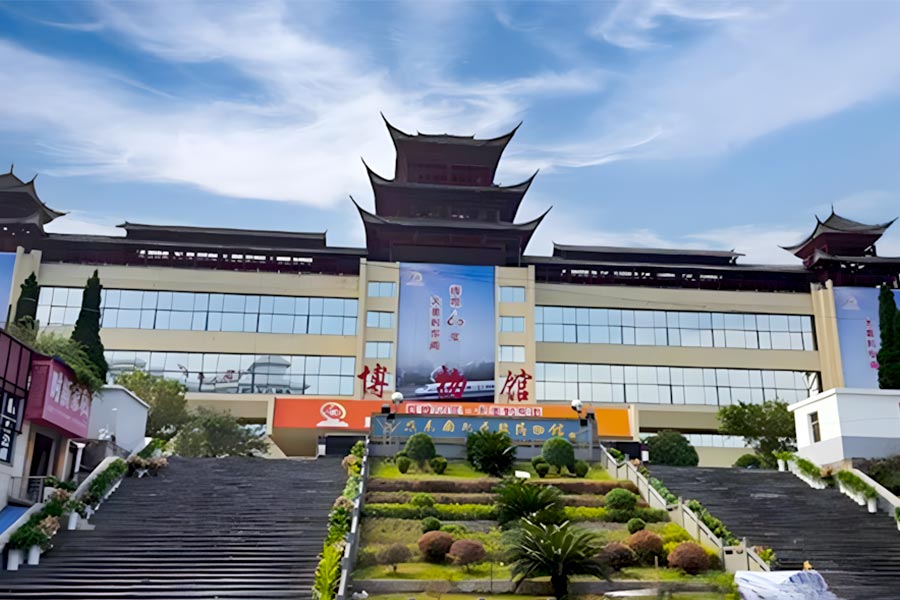Kaili Ethnic Minorities Museum

Chinese name: 凯里民族博物馆
Location: No.5 Guangchang Road, Kaili City, Qiandongnan Miao and Dong Autonomous Prefecture, Guizhou Province
Opening time: 09:00-17:00(Tuesday-Sunday)
How to get to Kaili Ethnic Minorities Museum: By bus No.1, 2, or 6 and get off at the stop of Wanbo Xi (Wanbo West)
Introduction to Kaili Ethnic Minorities Museum
Kaili Ethnic Minorities Museum covers an area of 11,000 square meters and has a building area of 7,421 square meters. As an iconic building in the urban area of Kaili City, the museum integrates the architectural styles of both Miao and Dong minorities. It is the collection, protection, research and exhibition center of the minorities’ culture of Qiandongnan Miao and Dong Autonomous Prefecture in Guizhou Province.
Kaili Ethnic Minorities Museum has a more detailed introduction to human geography and ethnic customs of Qiandongnan Miao and Dong Autonomous Prefecture. There are more than 12,000 collections in the museum, with texts, pictures and objects displayed. The museum collects Miao and Dong ethnic costumes as well as some ancestor worship appliances and living utensils during the periods of ancient China’s Yuan, Ming and Qing dynasties. There are 12 pavilions in the museum, and only four are currently open, among these the minority customs pavilion and the dragon boat pavilion are most worth seeing.
The architectural form of the Kaili Ethnic Minorities Museum is full of ethnic characteristics -the central tower is in the form of drum tower of the Dong minority with multiple eaves, while the east and west towers are in the form of stilted building of Miao people. With the third and fourth floors the main open exhibition areas, the entire museum consists of theme pavilions such as “Southeast Guizhou Outline Pavilion”, “Minority Customs Pavilion”, “Minority Costume Pavilion”, “Dragon Boat Pavilion” and “Modern Folk Arts and Crafts Pavilion”. Since the main population of southeast Guizhou is the Miao and Dong minorities, the most important parts of the Kaili Ethnic Minorities Museum are Miao and Dong minorities’ exhibition halls in the “Minority Customs Pavilion” and the “Minority Costume Pavilion”. These two pavilions are classified by maps, tables and real objects according to history, branches, customs, etc., and display a variety of objects reflecting the daily life of the Miao and Dong families, which is also a good presentation to the culture, tradition, and history of the Miao and Dong minorities.
Quick Questions
Our team is waiting for your questions. Please feel free to ask us any questions you might have about our China package tours, Chinese culture, or the sites available. We will gladly help you with any special needs you might have and all questions, like our trip designing is completely free of charge.




